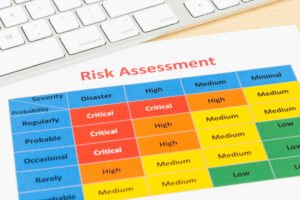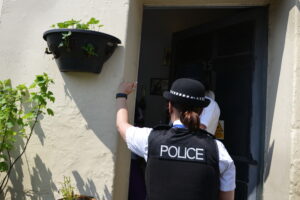Lone Working Risk Assessments: Are They A Legal Requirement?

A risk assessment is mandatory for employers that manage staff that undertake lone working of any form.
Lone workers usually face hazards, challenges, and even risks that are specific to their situation.
To write a lone working risk assessment, it is important to first identify and assess the risks associated with a job role carried out by a lone worker. The assessment’s sole purpose is identifying how to remove and reduce health and safety risks for lone workers.
The 5 key pieces of legislation that apply to lone working are:
– Health and Safety at Work Act
– The Health and Safety (First Aid) Regulations
– The Reporting of Injuries, Diseases, and Dangerous Occurrences Regulations
– The Workplace (Health, Safety and Welfare) Regulations
– Management of Health and Safety at Work Regulations
According to the legislation, employers are responsible for the welfare, health, and safety of all employees – lone workers included. Employers are required to identify any unique health and safety risks, provide their employees with a safe working environment, and remove or reduce them as far as is reasonably practical.
What Should Be Included in Lone Working Risk Assessments?
The lone worker risk assessment should primarily identify hazards, i.e. who could be harmed and in what ways. It should then the procedures in places for preventing harm, and clearly outline actions needed to reduce risk further.
The risk assessment also needs to include details of the person that completed it, the date of completion, along with the date of any next steps and a review.
How Can You Create a Lone Worker Risk Assessment?
It is the organization’s responsibility to designate an individual that will be responsible for health and safety. A risk assessment should always be done by someone that’s experienced and knowledgeable enough to do so.
HSE Lone Working Risk Assessment
HSE stands for Health and Safety Executive, which is a government agency in the UK responsible for the regulation, enforcement, and encouragement of workplace health, safety, and welfare, as well as research into occupational risks in the country. The HSE gives advice for undertaking risk assessments.
HSE 5-step risk assessment:
Hazard Identification
Talk to lone workers. Engage them in risk assessment and ask them for feedback on any risks they have identified. Consider any past incidents and near misses and try identifying the causes. Identify common hazards identified by bodies such as HSE and consider whether they are likely to impact your own workplace.
Identification of Parties That Could Be Harmed and How
Every hazard can be specific to any particular situation. When it comes to risk assessment, there’s never a “one size fits all” approach. Each employee will have different abilities and skills, experience, training levels, etc. Organizations also have the legal responsibility of protecting members of the public along with any other workers that might be affected by the work.
Risk Evaluation and Deciding on Precautions.
You have identified the risks, now you should consider how likely it is for harm to occur. Consider the following:
– The chances of the risk occurring
– The harm likely to result from the hazard
– Ways of minimizing or eliminating the risk
– Costs associated with eliminating the hazard. Is it proportionate to the risk?
You must then decide whether to remove the risk completely or strive to reduce it. Some of the practical steps that you can take include:
– Offering lone worker training
– Providing protective equipment and alarms
– Considering work patterns and adjusting them e.g. limiting lone working to social hours
– Hiring equipment for making work safer, e.g. Scaffolding rather than ladders.
Record Your Significant Findings
If your organization has 5 or more employees, you are required by law to record any significant findings. Your written risk assessment evidence showing:
– An assessment was done
– You identified the hazards
– You took reasonable steps to control the hazards
– The remaining risk is minimal
– Employees or health and safety representatives were included in the process.
Review Your Risk Assessment and Update If Necessary
You should consider the following during your risk assessment review:
– Have there been any significant changes in the workplace?
– Are your procedures and policies effective?
– Have any other issues been identified by your lone workers?
– Did any incidents or accidents occur?




